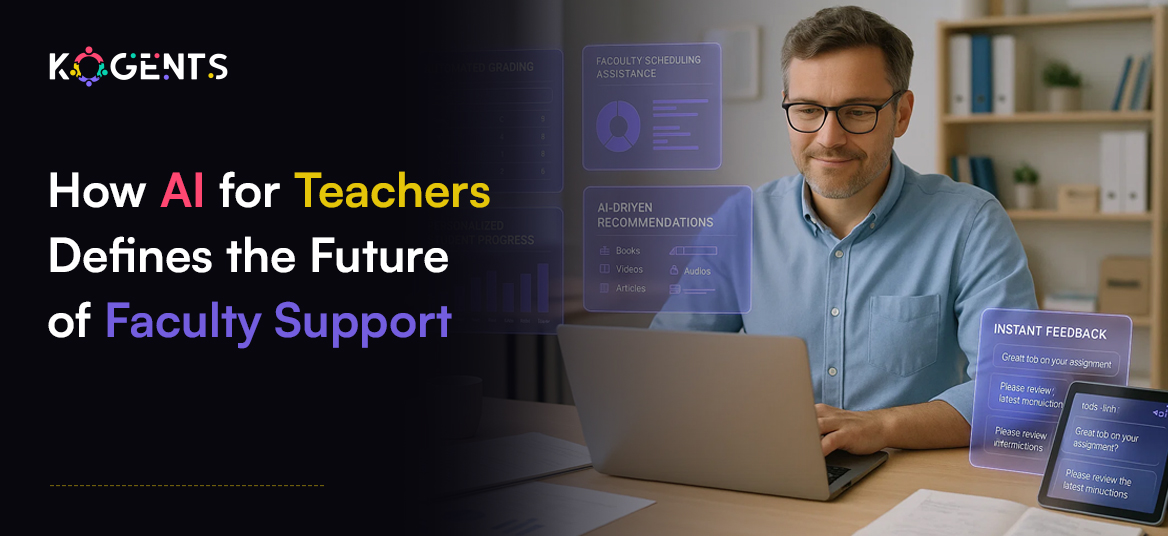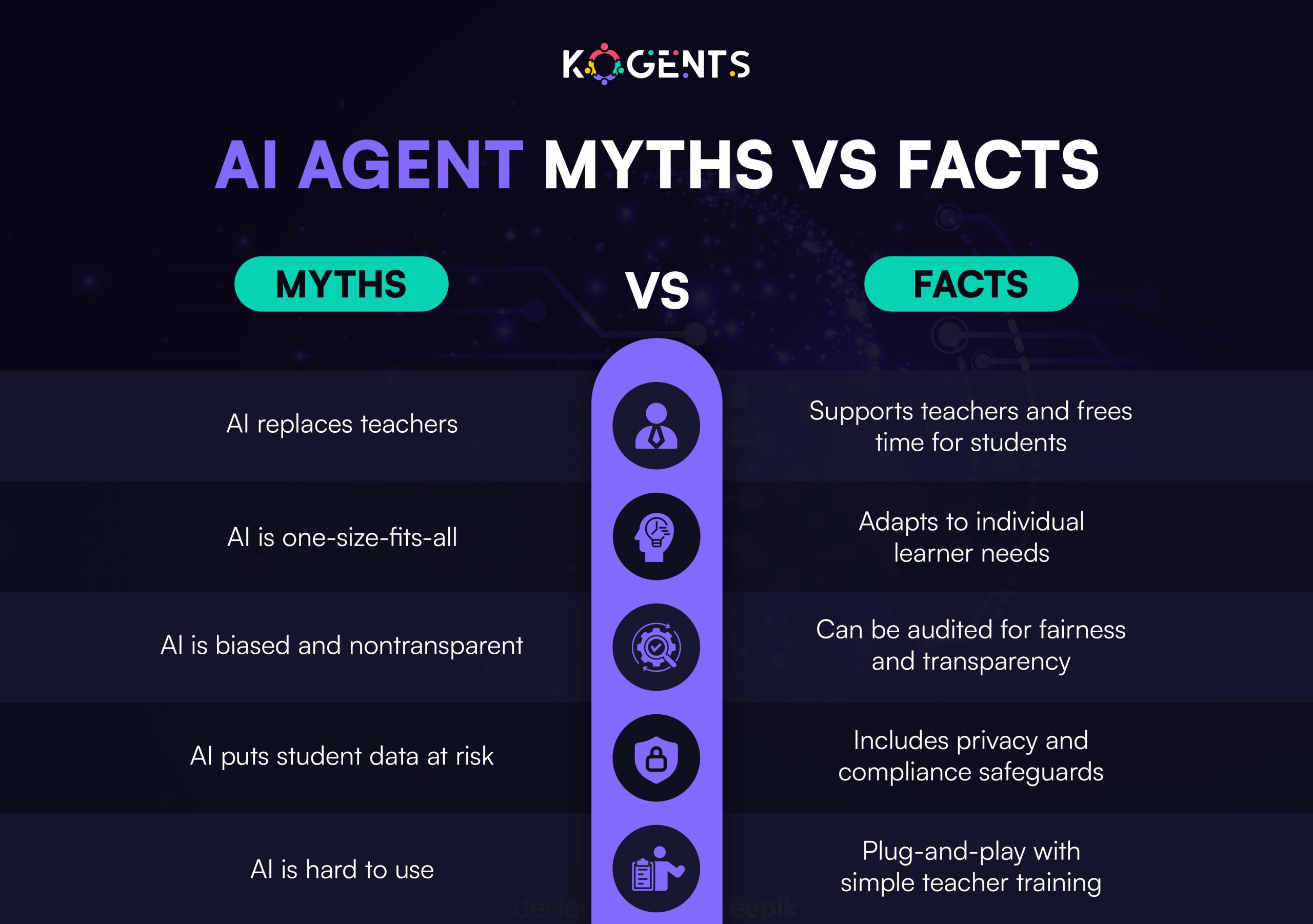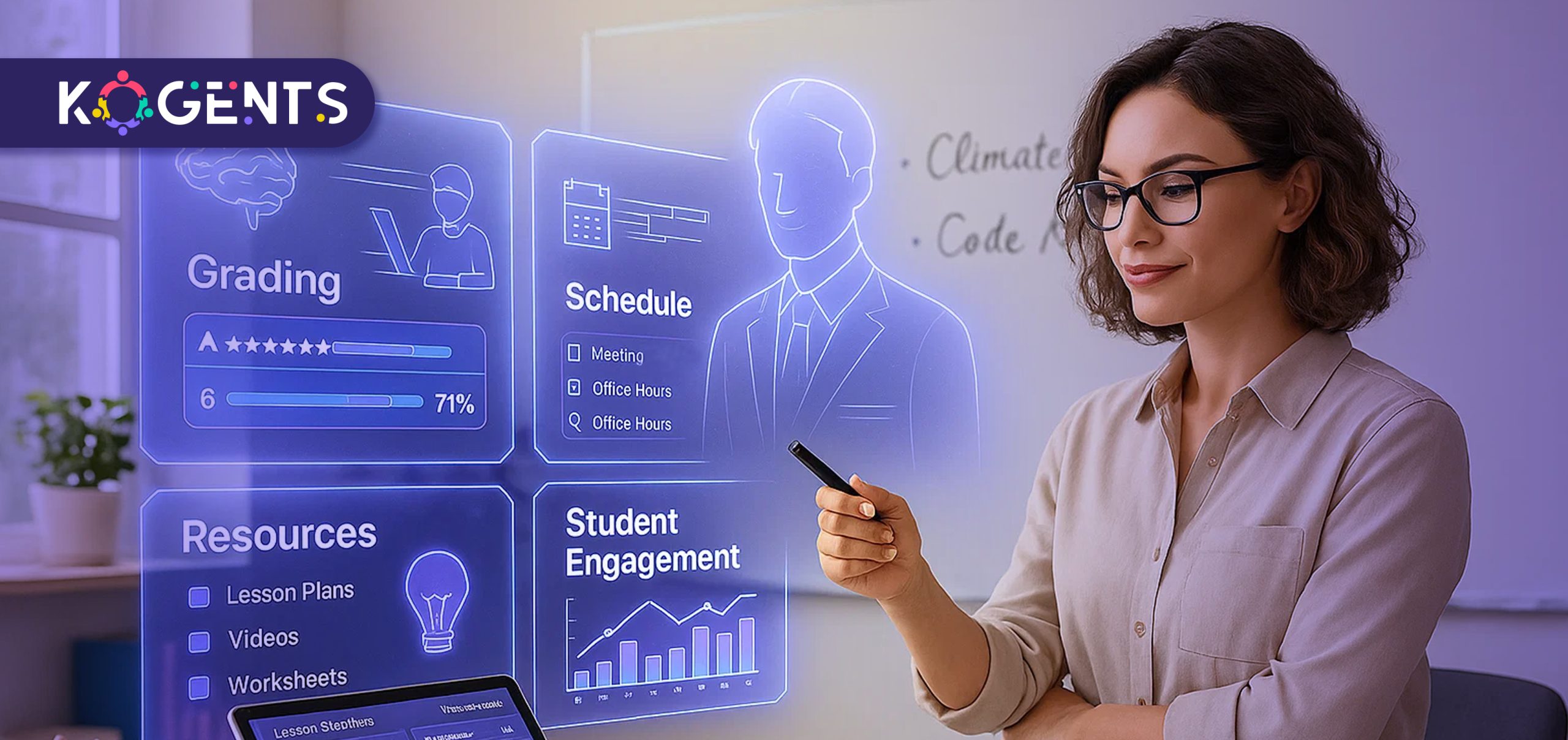How AI for Teachers Defines the Future of Faculty Support

Summary:
From lesson planning and classroom management to grading automation and personalized learning, artificial intelligence is transforming how teachers, faculty members, and even education entrepreneurs operate.
For entrepreneurs and solopreneurs exploring the education market, AI-powered teacher tools represent both a massive business opportunity and a way to address long-standing challenges in the teaching profession.
Faculty around the world are seeking solutions that reduce administrative load, improve teaching outcomes, and create more engaging student experiences. With educational technology (EdTech) advancing rapidly, AI has emerged as the most powerful driver of faculty efficiency, creativity, and resilience.
This article dives deep into how AI for teachers defines the future of faculty support, why it matters to education entrepreneurs, and how it will shape learning ecosystems in higher education and lifelong learning.
Key Takeaways
- Understanding how AI tools transform lesson planning, grading, and classroom management.
- Discovering the time-saving benefits that allow teachers to focus on students.
- Learning how adaptive AI systems personalize learning for every student.
- Exploring new opportunities for entrepreneurs in the growing EdTech market.
- Recognizing the importance of ethical, teacher-centered AI adoption.
Learn First: What Is AI for Teachers?
At its core, AI for teachers refers to the use of artificial intelligence in education to augment, support, and enhance the teaching process.
Unlike traditional digital learning tools, AI uses adaptive learning systems, machine learning models, and natural language processing to create intelligent, responsive solutions for faculty.
Examples include:
- AI teaching assistants that answer routine student questions.
- AI grading tools that evaluate essays, quizzes, and assignments with speed and accuracy.
- AI lesson planning software that generates customizable teaching materials aligned with curriculum standards.
- AI in classroom management systems that track attendance, monitor student participation, and provide behavioral insights.
As UNESCO’s AI and the Futures of Learning report emphasizes, effective AI integration must be human-centered, supporting teachers as professionals while maintaining ethical safeguards.
Why Entrepreneurs & Solopreneurs Need AI for Teachers?
Education is one of the world’s largest industries, and entrepreneurs who understand the growing demand for AI tools for teachers can position themselves at the heart of this transformation.
Key Opportunities for Entrepreneurs:
Faculty Productivity Solutions
Teachers spend nearly 50% of their time on non-teaching tasks. AI systems that handle automated grading, attendance, and curriculum design open a multi-billion-dollar efficiency market.
Scalable Platforms for Schools
AI for schools, especially in K–12 education, creates scalable opportunities to design tools that districts and governments can deploy widely.
Personalized Learning Ventures
AI enables smart learning platforms and AI tutoring systems that adapt to student needs, appealing to solopreneurs building specialized EdTech products.
Bridging Academia and Business
Higher education faculty require sophisticated curriculum planning software and AI for higher education teachers.
Note: Entrepreneurs can deliver platforms that improve both pedagogy and research.
How AI Agents Work in Business & Faculty Support?
AI agents are autonomous systems powered by machine learning that act as intelligent co-pilots for teachers.
They analyze large sets of educational data, identify patterns, and execute tasks without constant human supervision.
How They Support Faculty:
- Lesson Planning: AI agents curate resources, recommend teaching strategies, and create adaptive lesson structures.
- Classroom Analytics: Using learning analytics, AI agents provide insights into student performance and flag at-risk learners.
- Administrative Relief: By automating scheduling, grading, and communication, teachers reclaim valuable teaching time.
- Professional Development: Faculty can use AI to access tailored upskilling programs and generate research summaries.
Catch Point! The parallel between faculty support and business productivity means entrepreneurs can design AI solutions that work seamlessly across both domains.

What Modern AI Agents Bring to the Classroom
1. Adaptive Learning Technology
Adjusts teaching pace and style to individual student needs.
2. Natural Language AI Chatbots
Provides real-time student support and faculty Q&A systems.
3. Automated Grading & Feedback
Saves hours of teacher time while ensuring consistency.
4. Curriculum Alignment
AI ensures lesson plans meet local, national, or international education standards.
5. Smart Learning Platforms
Integrates with Google Classroom, Microsoft Teams for Education, and other classroom technology.
6. Faculty Productivity Tools
AI streamlines tasks like scheduling, report generation, and content curation.
Use Cases for Entrepreneurs, Solopreneurs & Educators
- AI in K–12 Education: Automating attendance, grading homework, and customizing lessons for diverse learners.
- AI for Higher Education Teachers: Supporting research, creating adaptive course modules, and managing large student groups.
- AI Tutoring Systems: Building direct-to-student platforms that provide affordable, 24/7 academic support.
- Faculty Training Programs: Solopreneurs can design EdTech AI platforms that teach teachers how to use AI effectively.
- Classroom Management: AI tools track student engagement and help educators design interventions.
Case Study:
A U.S. school district implemented AI grading tools that reduced teacher grading hours by 60%.
Teachers used the extra time for small-group interventions, improving student literacy rates by 15% in one academic year.

Why Teachers Need AI Agents Now: Key Advantages
The adoption of AI for teachers brings a transformative range of benefits that extend beyond simple convenience.
These advantages touch on efficiency, instructional quality, student engagement, and even the long-term sustainability of the teaching profession.
1. Time Savings
One of the most significant impacts of an AI agent for education is its ability to free teachers from repetitive, time-consuming tasks.
- AI grading tools can evaluate essays, assignments, and multiple-choice tests in seconds, offering constructive feedback aligned with rubrics.
- Similarly, AI lesson planning software generates curriculum-aligned materials in minutes, helping teachers prepare faster without sacrificing quality.
- Studies show that teachers can reclaim 5–10 hours per week, time they can reinvest into personalized instruction, mentoring, or professional development.
2. Adaptive Learning For Students
- AI’s ability to adapt to individual student needs is reshaping classrooms. Adaptive learning systems analyze performance in real time, identifying strengths, weaknesses, and knowledge gaps.
- Instead of a one-size-fits-all approach, students receive tailored resources, additional practice, or advanced challenges depending on their progress.
- This ensures that no student is left behind while allowing high-achievers to accelerate.
- Teachers can then use AI insights to design targeted interventions, making learning more equitable and effective.
3. Consistency in Grading and Feedback
- Traditional grading often suffers from human subjectivity, fatigue, or unconscious bias.
- AI grading tools bring objectivity and consistency by applying the same criteria uniformly across hundreds of student submissions.
- While human oversight remains essential, this consistency builds fairness and transparency into the evaluation process.
- Additionally, AI can provide students with instant feedback, closing the gap between learning an idea and understanding what needs improvement.
4. Scalable Impact Across Classrooms
- AI is not limited by class size.
- Whether a teacher has 20 students or 200, AI-powered platforms can scale seamlessly to manage assignments, analyze learning data, and suggest differentiated pathways.
- This scalability is especially powerful in higher education, where faculty often manage large cohorts.
- For schools and districts, scaling AI solutions can create a multiplier effect, improving outcomes across entire education systems without proportionally increasing teacher workload.
5. Faculty Well-being and Retention
- Teacher burnout is one of education’s most pressing challenges, contributing to high turnover rates worldwide.
- By reducing administrative burden and streamlining classroom management, AI tools enable teachers to focus on the creative and relational aspects of teaching, the very reasons most choose the profession.
- Improved work-life balance leads to higher faculty satisfaction, stronger retention rates, and ultimately, better continuity for students.
Challenges & Limitations
While the promise of AI in education is undeniable, its implementation comes with real-world challenges that must be carefully addressed.
1. Equity Gaps in Access
- Not all schools have equal access to resources, funding, or infrastructure.
- Wealthier districts can adopt advanced AI tools for teachers, while underfunded schools risk being left behind.
- To ensure equitable adoption, policymakers and EdTech entrepreneurs must prioritize accessibility and affordability.
Note: This creates a “digital divide” where students in low-resource environments may not benefit from innovations in AI for schools.
2. Ethical Compliance, Data Privacy, and Security
- AI systems process vast amounts of sensitive student data—from academic performance to behavioral patterns.
- Ensuring compliance with FERPA, GDPR, and UNESCO’s AI ethics guidelines is critical.
- Schools and developers must establish transparent data policies, safeguard against misuse, and involve parents and teachers in understanding how student data is handled.
- Failure to address privacy could erode trust in AI-based education tools.
3. Teacher Resistance and Adoption Barriers
- Some educators fear that AI may replace teachers or diminish their role in the classroom. Others are concerned about steep learning curves and a lack of training.
- For AI adoption to succeed, faculty must be positioned as collaborators, not competitors, with AI systems.
4. Algorithmic Bias and Ethical Risks
- AI systems are only as unbiased as the data they’re trained on. Poorly designed algorithms can perpetuate inequities, disproportionately affecting students from marginalized backgrounds.
- For example, predictive analytics may mislabel students as “at risk” based on skewed historical data.
- Developers must implement transparent AI models, conduct audits, and involve diverse stakeholders to reduce bias and ensure fair outcomes.
Case Study Spotlight: Khan Academy’s AI Tutor “Khanmigo”
One of the most influential examples of AI tutoring systems in action is Khan Academy’s “Khanmigo,” launched under the leadership of Sal Khan.
This initiative highlights both the potential and practicality of AI in real classrooms.
Key Results from Early Trials:
- Reduced Teacher Workload: Teachers reported spending 30% less time preparing lessons, as Khanmigo generated outlines, practice problems, and discussion prompts aligned with curriculum standards.
- Deeper Student Engagement: Students interacted with the AI tutor to explore concepts at their own pace, asking clarifying questions without hesitation. This encouraged more problem-solving, inquiry, and curiosity-driven learning.
- Improved Faculty Satisfaction: With routine tasks delegated to AI, teachers were able to dedicate more energy to one-on-one mentoring and small-group facilitation. Faculty reported feeling less overwhelmed and more effective in their teaching roles.
Why It Matters?
Khanmigo demonstrates how AI teaching assistants can operate as supportive partners in the classroom.
Instead of replacing teachers, AI tools amplify their ability to personalize instruction, manage diverse learning needs, and focus on higher-order educational goals.
As more platforms adopt similar approaches, this model could redefine global best practices for AI in education.
AI for Teachers vs Other Tools
| Feature | AI for Teachers | Traditional Tools | General Productivity Software |
| Lesson Planning | AI-driven, adaptive to curriculum | Manual, time-intensive | Limited templates |
| Grading | Automated & scalable | Manual, slow, subjective | Not designed for grading |
| Classroom Management | Real-time analytics & tracking | Manual observation | Limited scheduling tools |
| Personalized Learning | Adaptive pathways per student | One-size-fits-all | Minimal customization |
| Faculty Productivity | Automates admin, reporting | Manual paperwork | General task management |
Future of AI Agents for Teachers
The future of AI for teachers is not about replacing human educators but about augmenting their expertise with intelligent support systems. Several innovations are already shaping what’s next:
1. Immersive AR/VR Integration
- Imagine a history teacher guiding students through ancient Rome using VR headsets, while an AI system adjusts the difficulty and pacing for each learner.
- AI combined with AR/VR will create deeply immersive, interactive lessons that go far beyond textbooks and lectures.
2. Voice-Powered AI Assistants
- Just as smart speakers have transformed homes, voice-enabled AI assistants are poised to enter classrooms.
- Teachers could issue verbal commands like, “Show me the class’s progress on algebra skills this week. This hands-free interaction makes classroom AI tools more natural and efficient.
3. Predictive Learning Analytics
- AI will increasingly provide long-term insights into student development.
- By analyzing years of performance data, advanced learning analytics can predict future challenges, such as identifying students who are likely to struggle in higher-level math or are at risk of dropping out.
- Early interventions could dramatically improve student success rates.
4. Professional Certification and Training
- Organizations like ISTE are already rolling out AI certifications for educators, signaling a future where proficiency in AI-powered tools is a core competency for teachers.
- Professional development programs will standardize AI literacy, ensuring that faculty can confidently integrate technology into pedagogy.
5. Global Policy and Ethical Frameworks
- International bodies like UNESCO and the OECD Education Directorate are shaping global policy frameworks to ensure AI adoption is safe, equitable, and ethical.
- These guidelines will continue influencing how schools worldwide deploy AI, protecting both students and teachers.
Final Thoughts!
The future of education is being shaped right now, and at the heart of this transformation lies AI for teachers.
By combining the power of artificial intelligence in education with the creativity and empathy of human educators, we are building classrooms that are more efficient, more personalized, and more inspiring.
From AI lesson planning and automated grading to adaptive learning systems and AI tutoring platforms, these technologies are redefining how faculty teach and how students learn. The next decade won’t be about replacing teachers, but about amplifying them through smart learning platforms, AI classroom assistants, and teacher productivity tools that create lasting impact.
See how Kogents AI can help you in this regard. So, drop an email at info@portal.kogents.ai or give us a call at (267) 248-9454.
FAQs
What is AI for teachers?
AI for teachers refers to the use of artificial intelligence in education to support tasks like lesson planning, grading, and classroom management so teachers can focus more on student engagement.
How can teachers use AI tools in the classroom?
Teachers can integrate AI teaching assistants, AI grading tools, and AI chatbots for education to automate repetitive tasks, provide real-time feedback, and personalize student learning experiences.
What are the main benefits of AI for teachers?
The benefits include time savings, personalized learning, consistency in grading, teacher productivity, and reduced burnout—all while enhancing student outcomes.
What challenges do schools face when adopting AI in education?
Common challenges include equity gaps, data privacy concerns, potential algorithmic bias, and teacher resistance to adopting new classroom technology.
What is the future of AI in K–12 and higher education?
The future includes adaptive learning systems, AI tutoring platforms, voice-powered classroom assistants, and AI certification programs for teachers, guided by ethical frameworks from UNESCO and OECD.

Kogents AI builds intelligent agents for healthcare, education, and enterprises, delivering secure, scalable solutions that streamline workflows and boost efficiency.